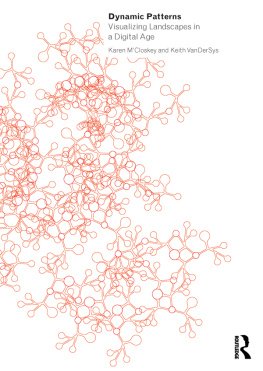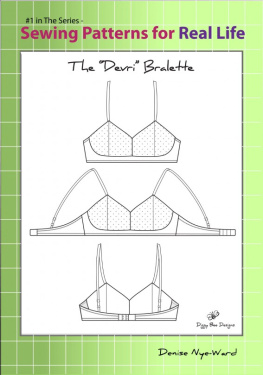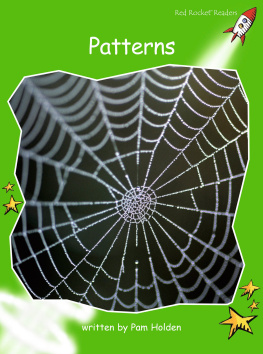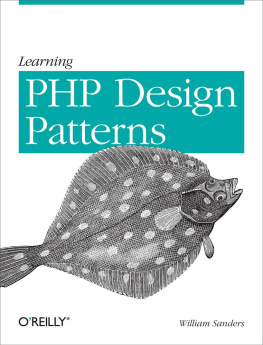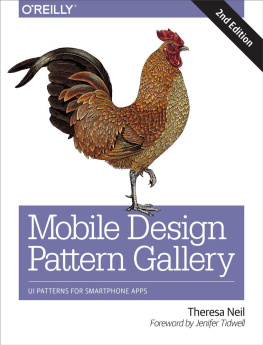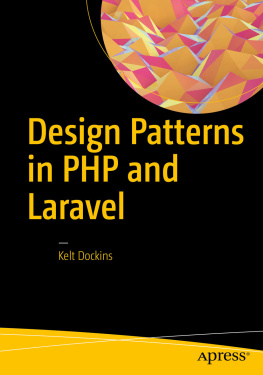The right of the authors to be identified as authors of this work has been asserted by them in accordance with sections 77 and 78 of the Copyright, Designs and Patents Act 1988.
All rights reserved. No part of this book may be reprinted or reproduced or utilised in any form or by any electronic, mechanical, or other means, now known or hereafter invented, including photocopying and recording, or in any information storage or retrieval system, without permission in writing from the publishers.
Contents
by James Corner
Chapter 1
Topological Patterns
Chapter 2
Behavioral Patterns
Chapter 3
Ornamental Patterns
by James Corner
This is a beautifully stimulating and important book. It speaks to pattern and process and expands our understanding of how patterns inform, shape, structure, and influence our world.
A quick perusal through the following pages showcases an amazing and alluring collection of imagesa wide variety of patterns that are visually gorgeous, suggestive, and inspiring. At first glimpse, one might assume that this is simply a beautiful pattern book, a 21st-century version drawn from current advances in imaging technology, digital media, and representational innovation. The casual reader might be visually impressed but think that this is all about pattern in its most superficial reading, pattern as purely visual surface, seductively beautiful but of limited import for so many issues facing our society today.
Yet a closer reading, a more nuanced and careful reading of both text and image, reveals much deeper and profound values than simply surface gloss. MCloskey and VanDerSys masterfully unfold the many layers and capacities of pattern. At stake are some of the most fundamental of human concernsrelationship, connection, structure, allusion, possibility, innovation, and experience. This book speaks to how we as humans see, conceptualize, interact, value, and innovate. It speaks to art, science, technology, design, and humanism. More specifically, it speaks to how people relate to their environment, to the physical world of experience, and perhaps most profoundly and deeply, to the world of the other, to the world we do not yet know, the still to be discovered and found, experiences and effects yet to be made, hidden in patterns still to be disclosed.
Patterns are relational frameworks that simultaneously describe and project; they reveal structures, processes, and relationships, as well as structure physical frameworks that give shape and form to our world. Think of a trans-continental flight looking down upon the patterns of the earth in which dendritic hydrological patterns formed as small tributaries join larger streams and rivers and larger volumes of water accumulate and shape the land; graded outwashes and braided textures reflect rapid floods and dissipation of water; grids and lines lend order to settlements and land use. These various patterns are tied into the processes that shape them, as well as themselves forming the physical conduits, pathways, and networks for energy, materials, and forces to actually flow and interact. Patterns are dynamic, active, and always workingdistributing, assembling, binding, coalescing, connecting, and so on. They speak to ecology and nature as much as to aesthetics, human invention, and representation. By extending our understanding of pattern into the digital world, MCloskey and VanDerSys remind us of the generative and hidden forces of pattern, the diagrammatic and representational structures that give rise to new understandings, new forms, and new possibilities.
The authors show how pattern can be both instrumental (patterns perform work) and disruptive (patterns suggest alternative readings, disrupting convention and habit). The authors also show how patterns affect mood and experience, influencing psycho-somatic responses in an inter-connected eco-sphere. Patterns induce new types of emotion, connection, and response. In this way, the authors eloquently argue for a dialogue, or even a synthesis, among appearance, performance, and aesthetic reception. Here, pattern is not simply graphic but also and at the same time fundamental for both influencing and shaping processes and potentialities that are at once material and perceptual, physical and psychic. Such reciprocity helps to meld the scientific mind with the artist, at once both measurably explanatory and immeasurably illuminating.
Finally, it is important that this book on pattern is tied quite specifically to landscape architecture: to an enhanced understanding and analysis of landscapes, as well as to actually imagining, projecting, and inventing new forms of landscape. Here, the crux is not simply new patterns and forms for their own sake, but rather new patterns and forms that structure new ecologies, new programs, and new modes of reception.
Our world is an ever-evolving kaleidoscope of dynamic patterns, each structuring relationships and modes-of-being; this book provides thoughtful and suggestive insight into how patterns work and their value for our very humanity.
Dynamic Patterns: Visualizing Landscapes in a Digital Age explores the role of patterns in contemporary landscape design. We examine methods that foster a multivalent understanding of patterns as both the expression and shaping influence of environmental processes. The importance of patterns for landscapes is not a recent development; nevertheless, patterns are ripe for reinvention in light of current environmental preoccupations and in connection with recent techniques enabled by digital media.
Although digital media are pervasive, little attention has been paid to the effects of these media in the shaping of landscape expressions and forms. Publications on this topic in the field of landscape architecture often take the form of software-based technical manuals or collections that are categorized by drawing type. A number of recent publications suggest that this gap is beginning to be filled, and we hope that our book makes an additional contribution. It is important to note, however, that Dynamic Patterns is not an argument for the use of any one particular tool or medium over any other. This book appeals to readers to think about digital techniques as means of calculated discovery that can open up design possibilities through exploration and experimentation. Techniques, whether in design, science, or any other area of inquiry, have always inhabited a realm between useful fiction and material reality. It cannot be otherwise; our understanding of the world is fused with the methods that we use to represent it.

